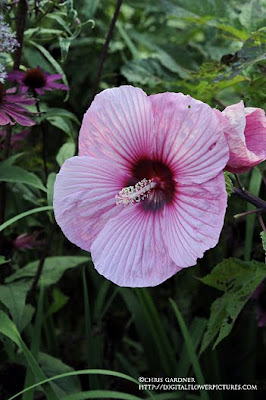
Purple leaf Dahlias
(DAHL-ya)
Yesterday we decided to drive down to Central Park in Manhattan and see the only formal garden in the park. Ruby and Juno accompanied us but that makes it almost impossible to take pictures. Especially when Ruby sees a cat in the plants or she feels she has to protect Juno from the other dogs in the park. It all adds up to a distraction. That is something we knew going in though.
Central Park never ceases to amaze me. We were lucky to find a parking space on East 105th Street and walk about a half a block to the garden entrance. The garden was really beautiful and full of flowers and interesting foliage. For me the North Garden was the place to be and liked it the best. There were a few wedding photo shoots going on in the South Garden so we didn't explore it as much. The whole trip was a bit of exploratory mission and it definitely warrants a return trip for more photography.
We also walked around the park for a while after visiting the garden. The damage from the huge thunderstorm was evident in the area. The trees had been cleaned up but there were several stumps of trees that had been blown over. If you looked a little more closely a lot of the big trees had sustained some limb damage. There is a link to an article about the August 19th, 2009 storm.
Storm Toppled Scores of Trees in Central Park Here is a link to the Conservatory Garden Reading the article was fun after visiting. It shows that area of the park has a rich history.

The Dahlia pictures for today are the purple leaf type. I thought that the yellow one was 'Bishop of York' but after looking at some pictures figured out it is not. The flower shape was different and today's flower didn't have a red center. The foliage was deeper purple and less glossy, also. I don't remember what color the black and white was. Oops. There were no signs identifying the plants that could be seen.
Purple leaf Dahlias are always nice to have in the garden. The contrasting colors of the flowers with the rich dark leaves is superb. They don't seem to grow as tall as some of the other types are a classy and refined plant.
This is one meager photo of the North Garden. The 105mm lens was a little too wide to get more of the garden in. Next time I will bring the 60mm and 24mm lens with me.

I am looking forward to clicking around and seeing other flowers from around the world:
Today's Flowers . It starts at 18:00 GMT on Sunday.




 Semi Cactus Dahlia
Semi Cactus Dahlia
 2009 National Dahlia Show
2009 National Dahlia Show










 White Coneflower
White Coneflower










 Tall Bearded Iris
Tall Bearded Iris

 Wax Begonia
Wax Begonia


 Belgian Hardy Mum
Belgian Hardy Mum

 Purple leaf Dahlias
Purple leaf Dahlias


 Hardy Hibiscus
Hardy Hibiscus
